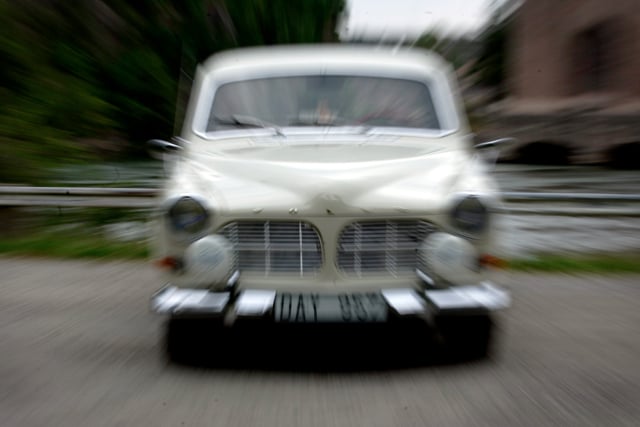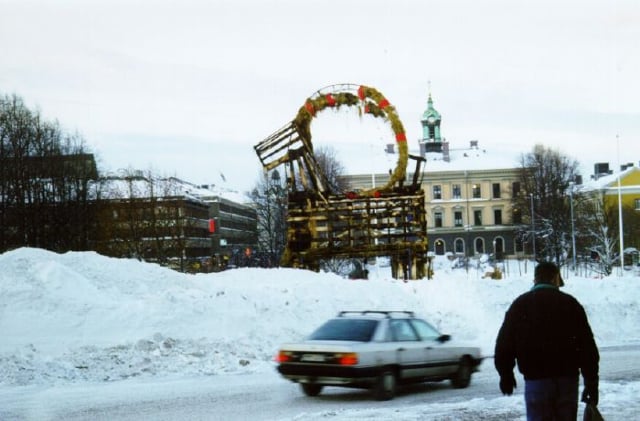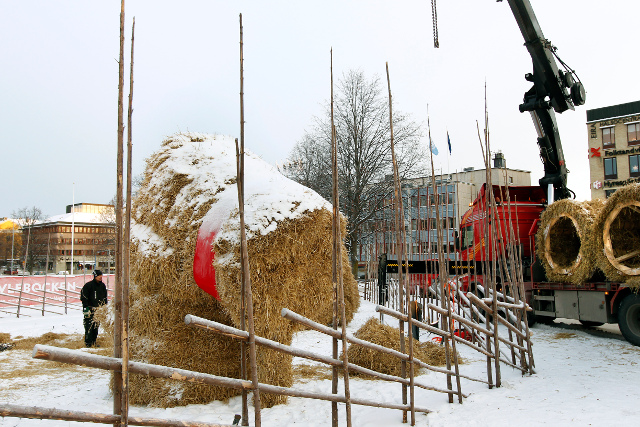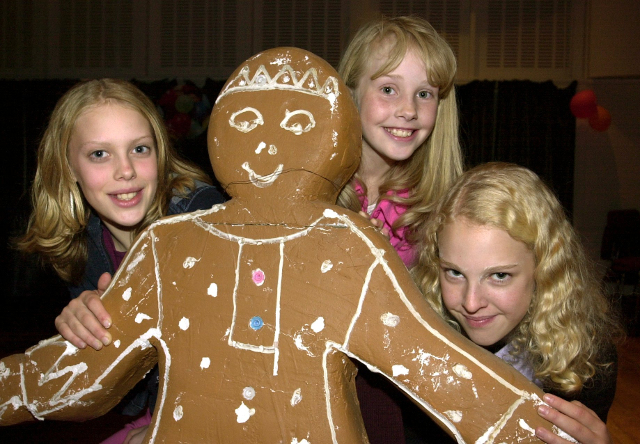Every year the massive Christmas goat (Gävlebocken) in the Slottstorget square in Gävle, central Sweden, attracts a media storm with locals dreaming up new ways to protect the 13-metre-high creation.
Despite their efforts, including in some years spraying the goat in anti-flammable liquid, the goat usually goes up in flames long before Swedes have opened their Christmas presents.
In 2016 it burned down on its opening day. In 2021, after surviving for a record-breaking four consecutive years, the goat burned down a week before Christmas.
In a bizarre coincidence (or is it?) the building of the first goat in 1966 was assigned to the chief of Gävle’s fire department, Jörgen Gavlén, whose brother Stig Gavlén, an advertising consultant, had come up with the idea of making a giant version of the traditional Swedish Yule Goat and placing it in the square.
It would not be the city fire department’s last dealings with the goat…
READ ALSO: Is Gävle Sweden’s most random city?
Over its six-decade history, it has survived only 20 times.
It’s fair to say that the drama of the goat’s fate is now at least as big a draw as the goat itself, to the extent that Swedish and international bookmakers now offer odds on the goat surviving the season of Advent. You can even watch the goat live here.
Over the years, there have been some extraordinary attempts to destroy the goat.
Here is The Local’s list of the five most outrageous Gävle Goat attacks.
1976 – battered by a souped-up Volvo
A student drove a customised Volvo Amazon at the rear legs of the goat, precipitating its collapse.

1998 – burned down during a major blizzard
Burning down a straw goat is probably not the hardest thing to do given the right sort of dry conditions. But torching one during a major blizzard? That’s what the vandals achieved in December 1998.

2001 – burned down by baffled American tourist
On December 23, a 51-year-old American artist, Lawrence Jones, was apprehended, lighter in hand, as he watched the goat burn.
He told police he had been misled by Swedish friends, who insisted torching the straw goat was a perfectly legal Swedish tradition.
He spent 18 days in prison and was fined 100,000 kronor which he has not paid.
In 2010, he alleged that there was a secret society, involving all the people and organizations responsible for building the goat, who planned each burning or attack.

2005 – burned down by arrow-wielding Santas and gingerbread men
Vandals reportedly dressed as Santa Claus and gingerbread men shot a flaming arrow at the goat on December 3rd.
The hunt for the arsonists responsible for the goat-burning in 2005 was featured on the weekly Swedish live broadcast TV3’s Most Wanted (Efterlyst) on December 8th.

2010 – a failed attempt to steal the goat using a helicopter
Two mysterious men attempted to bribe a guard to leave his post watching over the giant goat in an attempt to kidnap the iconic Christmas symbol using a helicopter.
The two men offered the guard 50,000 kronor ($7,350) to look the other way. According to the guard, referred to only as Mats, the two men wanted to kidnap the goat using a helicopter and take it to Stureplan in central Stockholm.




 Please whitelist us to continue reading.
Please whitelist us to continue reading.
Member comments